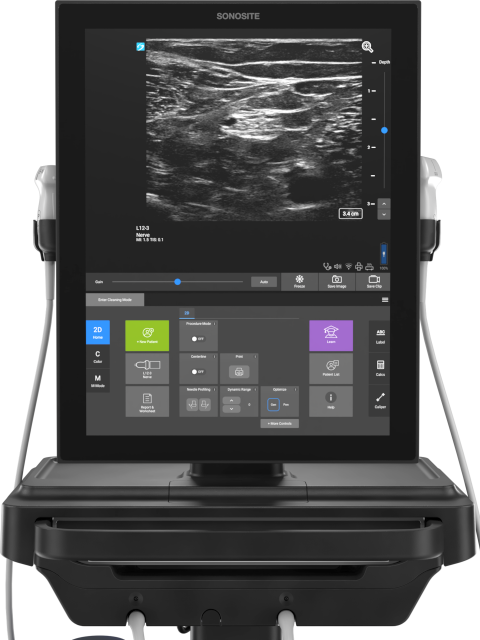

Sonosite PIV Assist
Redefining ease of use for vascular access
Sonosite PIV Assist
The importance of ultrasound guided PIV
Decrease in central venous catheter placement due to use of ultrasound guidance for peripheral intravenous catheters
Arthur K. Au MD et al., 2012
Obtaining intravenous (IV) access in the emergency department (ED) can be especially challenging, and physicians often resort to placement of central venous catheters (CVCs). Use of ultrasound-guided peripheral IV catheters (USGPIVs) can prevent many “unnecessary” CVCs, but the true impact of USGPIVs has never been quantified. This study set out to determine the reduction in CVCs by USGPIV placement.
Extended dwell and standard ultrasound guided peripheral intravenous catheters: Comparison of durability and reliability
Christopher M Fung et al., 2022
Vascular access is a critical component of emergency department (ED) care. Ultrasound guided placement of peripheral intravenous (USIV) catheters is increasingly common. However, USIV are thought to suffer from reduced durability and higher complication rates. Extended dwell catheters (EDC) are long peripheral IVs placed under combined ultrasound and wire guidance.
Outcomes of POCUS‐Guided Peripheral Intravenous Access in Difficult Venous Access Patients: A Systematic Review and Meta‐Analysis
Hany A Zaki et al., 2025
Point Of Care Ultrasound (POCUS) guided peripheral intravenous (PIV) access offers a safer and more efficient alternative for patients with difficult venous access. A systematic review of 15 studies with 1485 patients, sourced from five databases, including PubMed, Cochrane Library, MEDLINE, Web of Science, and Google Scholar, showed POCUS significantly improved success rates.
Ultrasound-Guided Peripheral Intravenous Line Placement: A Narrative Review of Evidence-based Best Practices
Michael Gottlieb et al., 2017
Peripheral intravenous line placement is a common procedure in emergency medicine. Ultrasound guidance has been demonstrated to improve success rates, as well as decrease complications and pain. This paper provides a narrative review of the literature focusing on best practices and techniques to improve performance with this procedure. We provide an evidence-based discussion of preparation for the procedure, vein and catheter selection, multiple techniques for placement, and line confirmation.
Available now on
Sonosite designs ultrasound systems, transducers, software, & accessories with real-world customer needs in mind.
Anderssen, L. M., Petersen, M. S., Wang, A. G., Mohr, M., & Fjallheim, A. S. (2025). The efficacy of ultrasound-guided peripheral intravenous cannulation versus the landmark technique in emergency department patients with difficult intravenous access: A systematic review and meta-analysis. Journal of Vascular Access. Advance online publication. https://doi.org/10.1177/11297298251347816
Gottlieb, M., Sundaram, T., Holladay, D., & Nakitende, D. (2017). Ultrasound-Guided Peripheral Intravenous Line Placement: A Narrative Review of Evidence-based Best Practices. The western journal of emergency medicine, 18(6), 1047–1054. https://doi.org/10.5811/westjem.2017.7.34610
Álvarez-Morales L, Gómez-Urquiza JL, Suleiman-Martos N, et al. (2024) Ultrasound-guided peripheral intravenous canulation by emergency nurses: A systematic review and meta-analysis. International Emergency Nursing. 2024;73:101422. https://doi.org/10.1016/j.ienj.2024.101422
Sonosite designs ultrasound systems, transducers, software, & accessories with real-world customer needs in mind.






